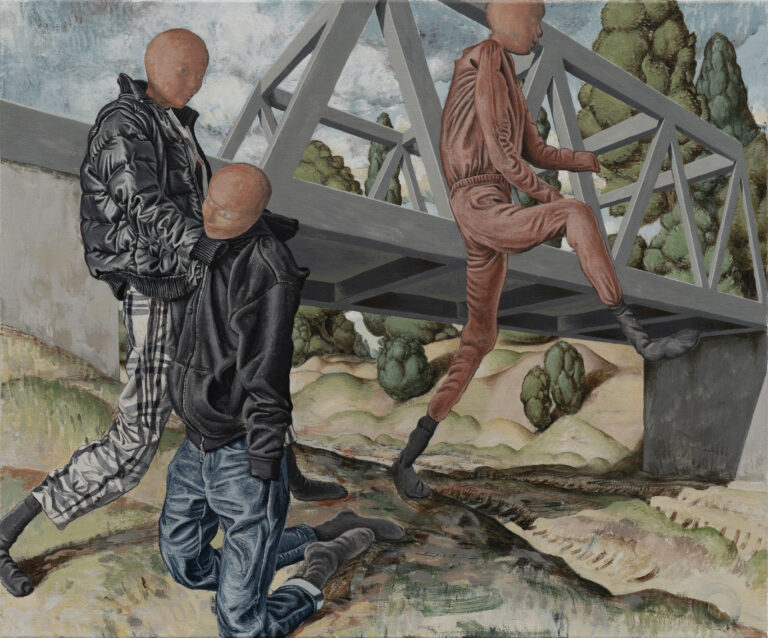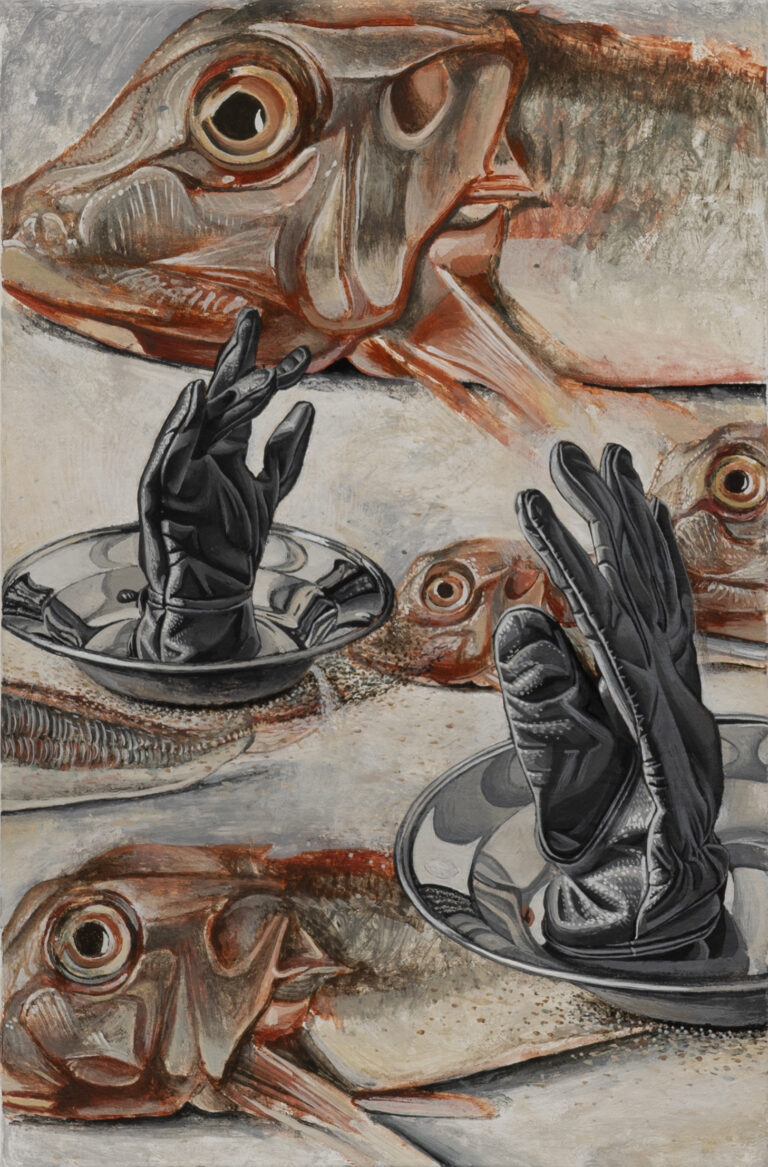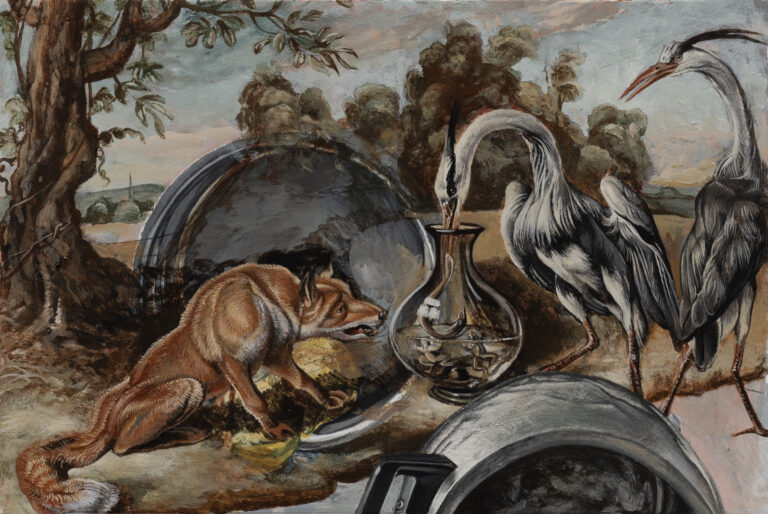Jannis Marwitz
The Directionality of Fur
13 JUN until 26 JUL 2025
Trautwein Herleth is pleased to present the gallery’s second solo exhibition with Brussels-based, German-born artist, Jannis Marwitz. The exhibition, titled The Directionality of Fur, comprises new paintings executed on wood panels, linen, copper, brass and board.
Marwitz’s latest body of work continues his engagement with painting’s history – both through direct art historical citation, such as his quotation of Frans Snyder’s 17th century painting, Fable of Fox and Heron, as well as his more elliptical references to biblical themes, mythology and still life painting. The exhibition’s title refers to an essay on adornment, which examines hair as a vehicle for accentuation or “directional ornament” (Richtungsschmuck).
Despite these references, Marwitz paints mostly from life. The figures that populate his chaotic and collaged tableaux are life size puppets, staged in the studio and painted under the changing conditions of natural light and the passage of time. Snippets of buildings and landscapes seen from his studio windows are integrated into the paintings. This is also not to say that Marwitz is an observational painter. Instead, his works stage images in succession, stacking them and weaving them into one narrative that echoes the ahistorical simultaneity of our present.
Some narratives span multiple canvases and others stretch beyond painterly fictions. The reoccurring leather gloves reinforce the fact that Marwitz’s staged puppets have no hands. Likewise, in the fable of the fox and the heron, each protagonist has what the other lacks. The ironically titled painting Photo of Artificial Cave declares its artifice both textually and visually, revealing itself as completely imagined. It’s no coincidence its dimensions are the same as a standard photo print or postcard.
How images communicate, what they reflect, and how we consume or become entangled with them is central to Marwitz’s approach. His appropriations of history, the self-reflexivity demonstrated by his canvases, his painterly precision, and shifts in scale and technique are easy to name, but to define the end result of how Marwitzcombines these modes remains elusive.



